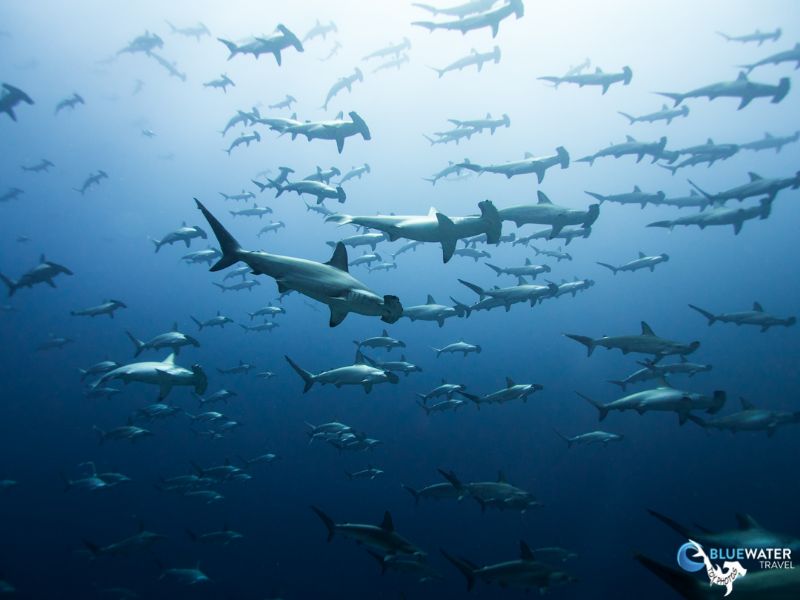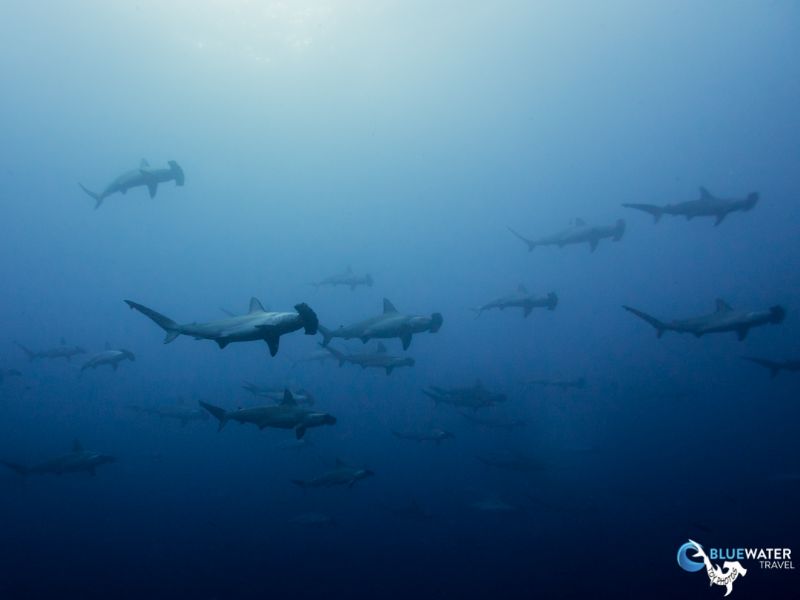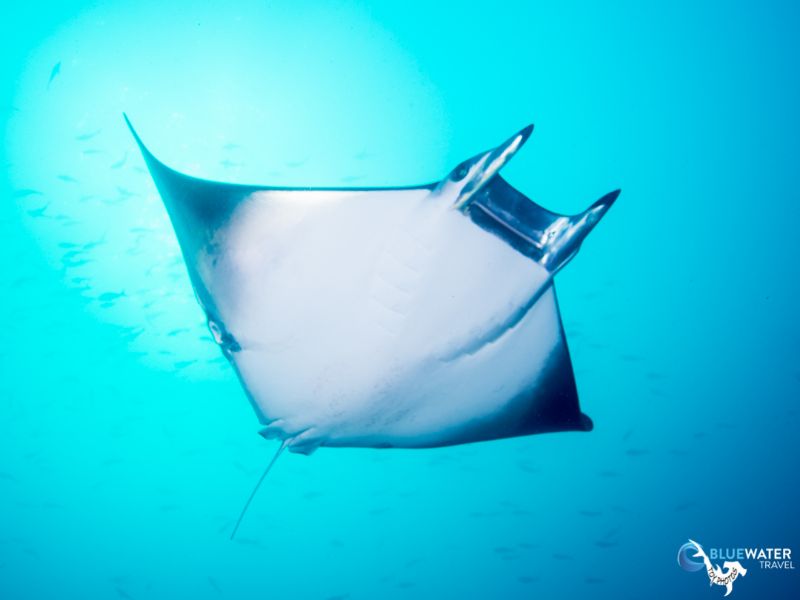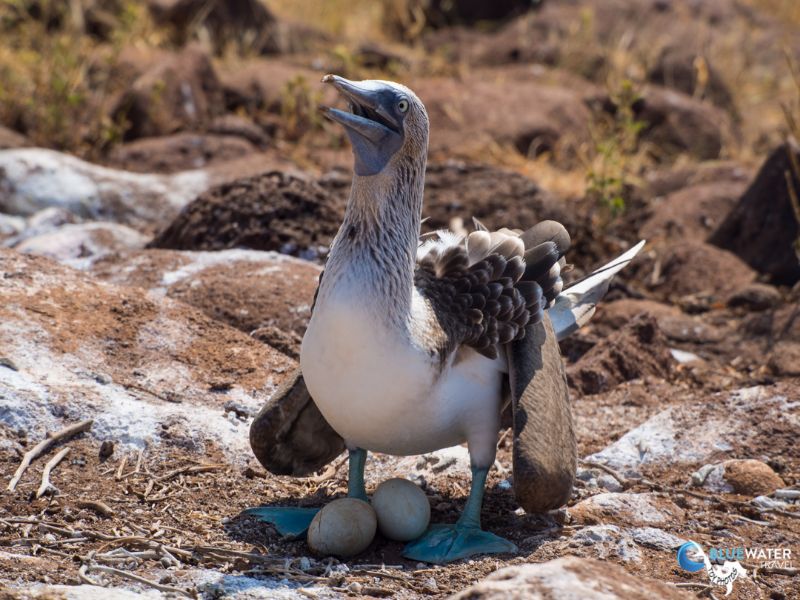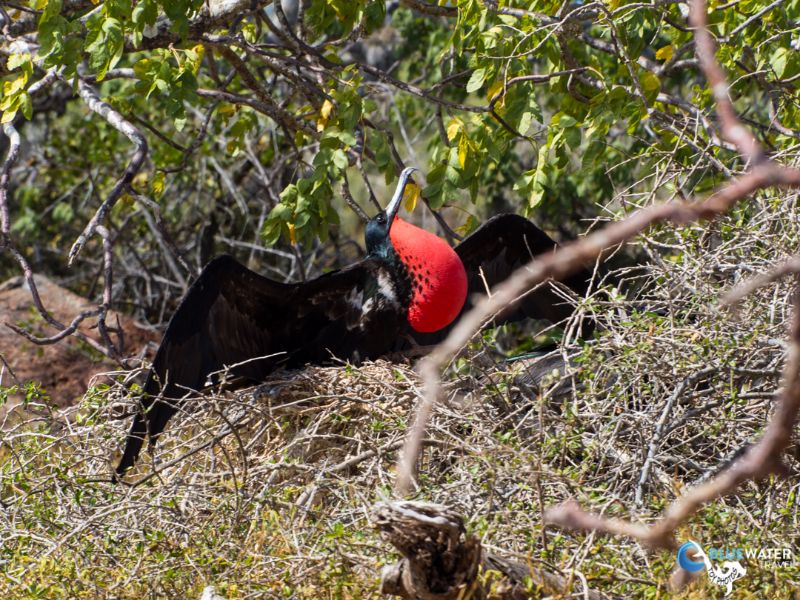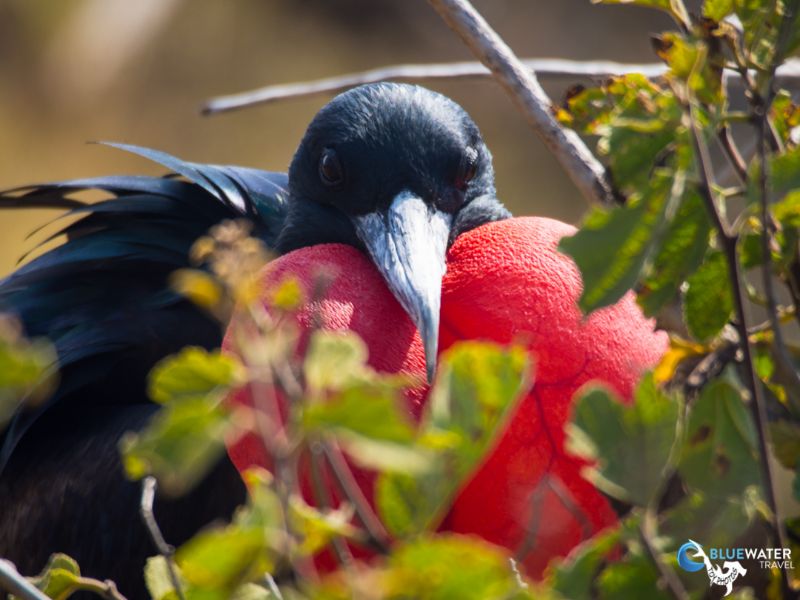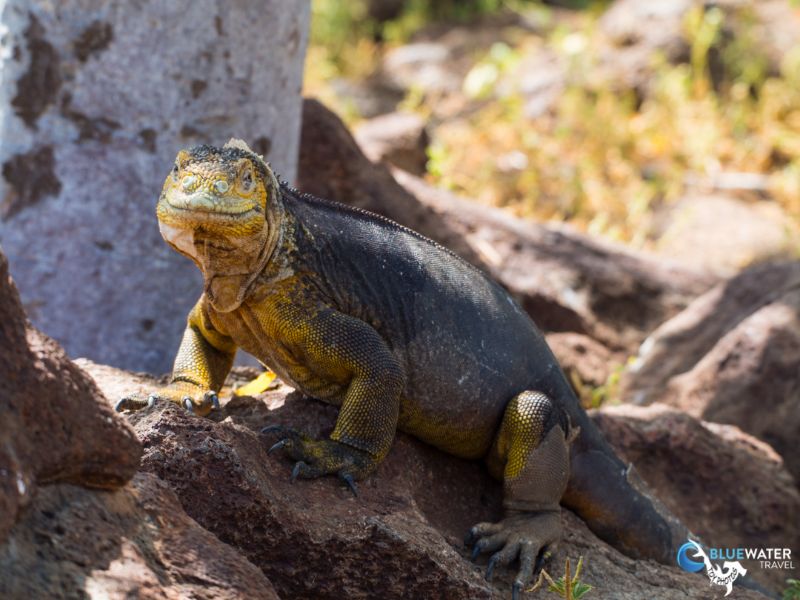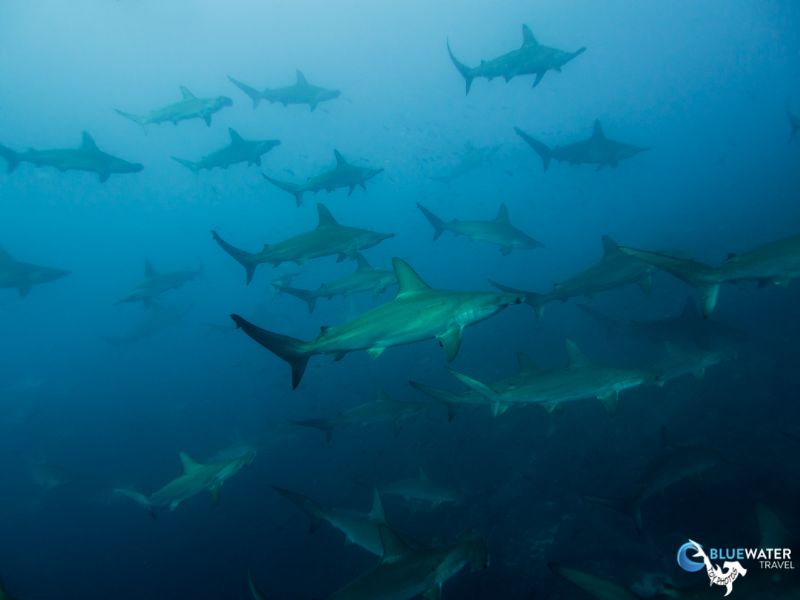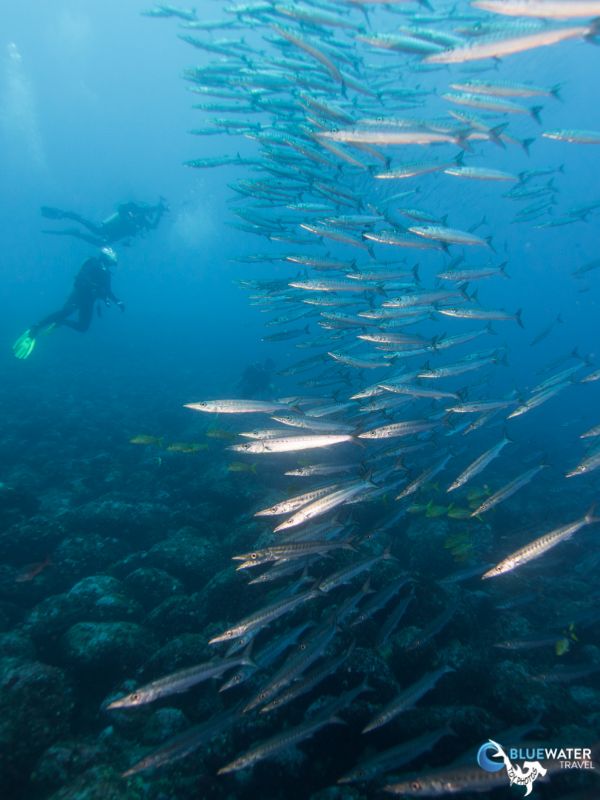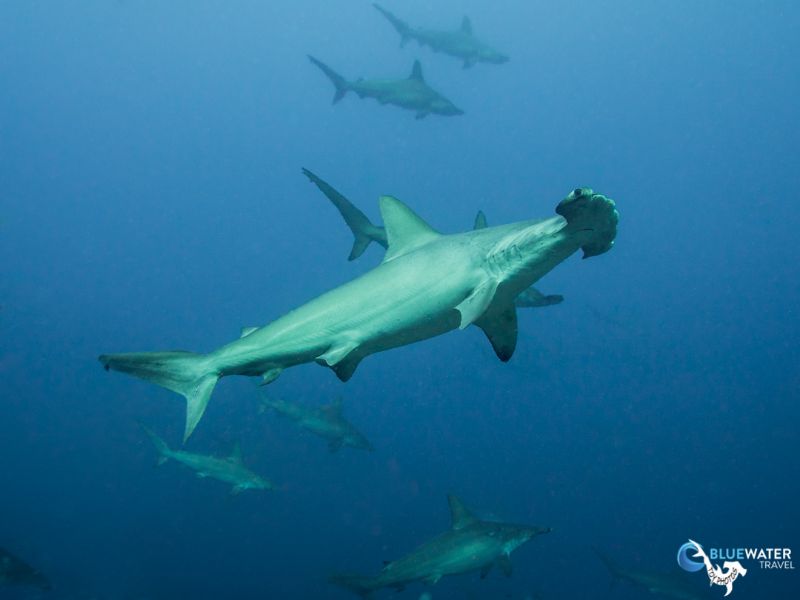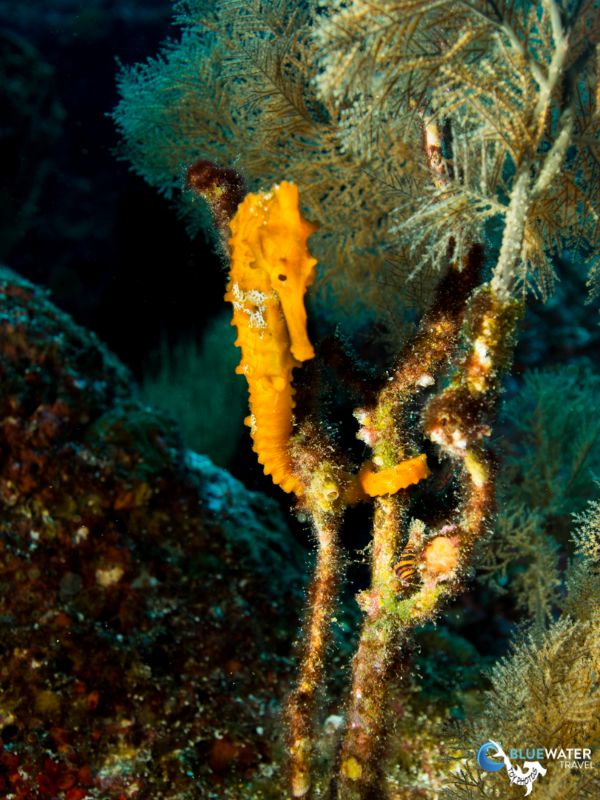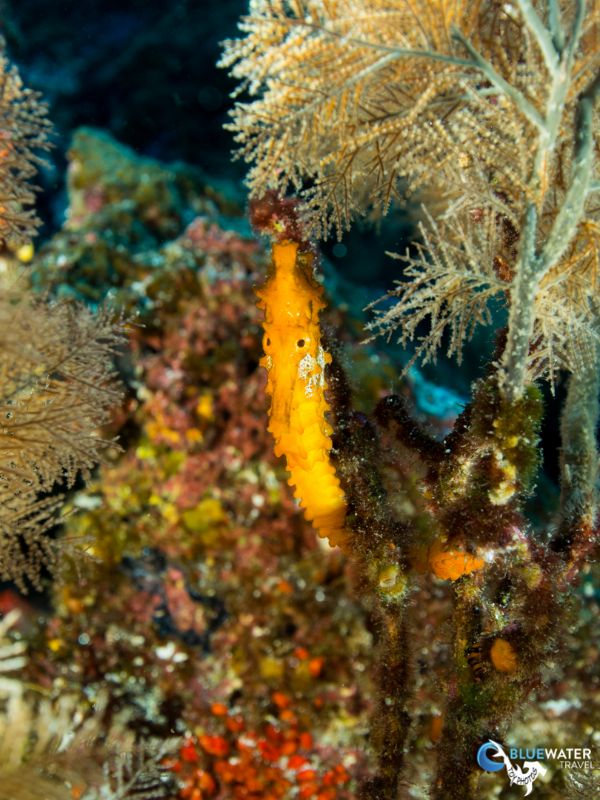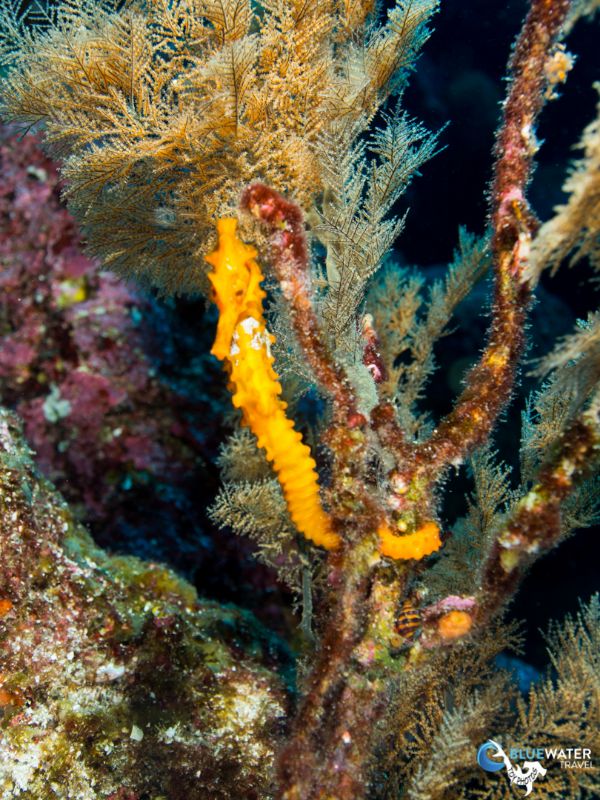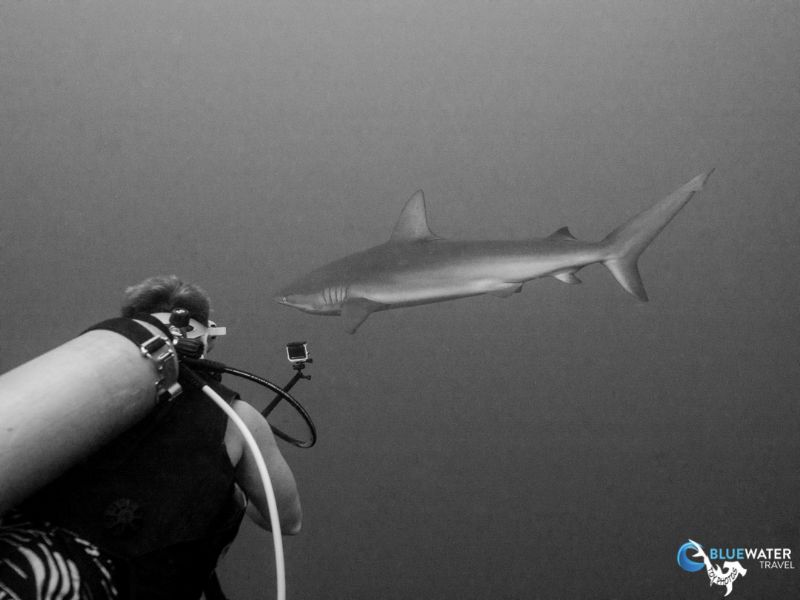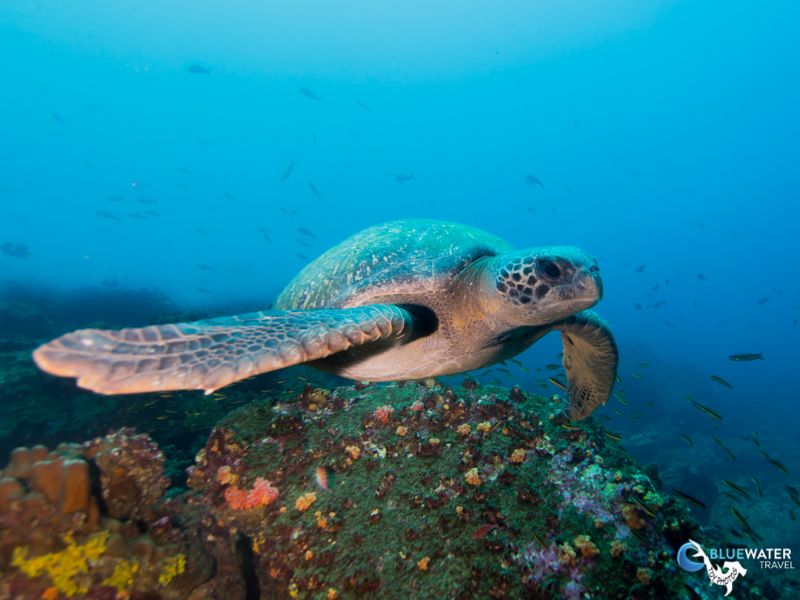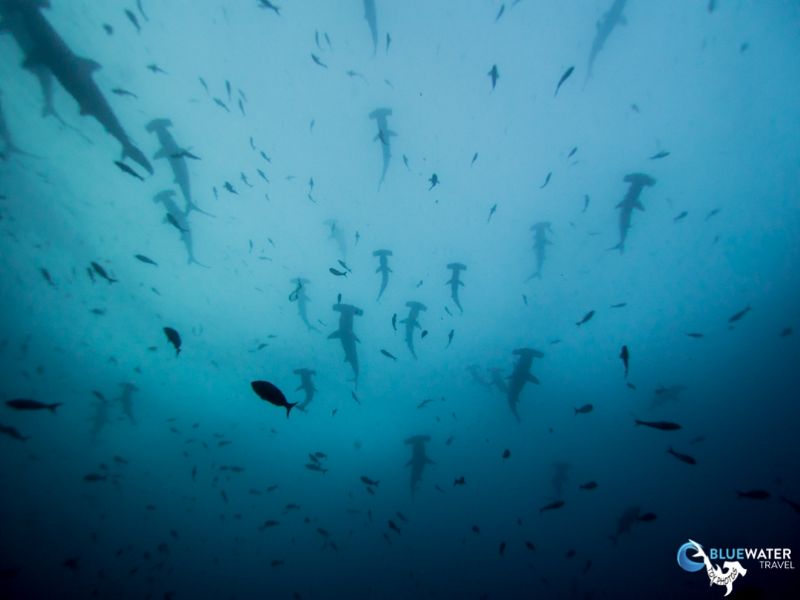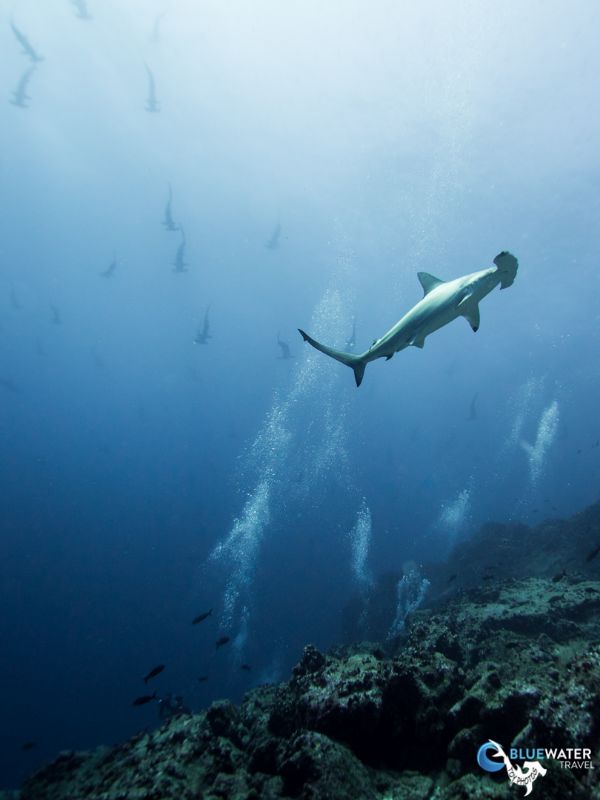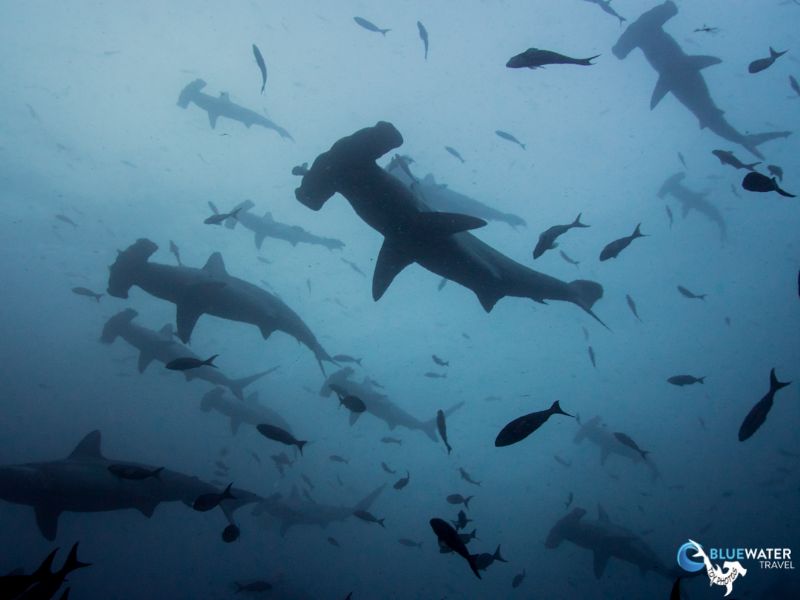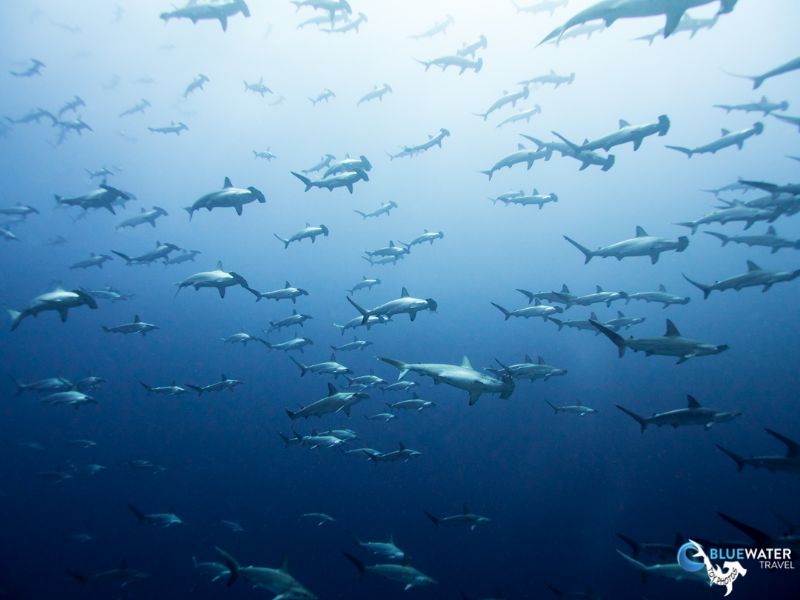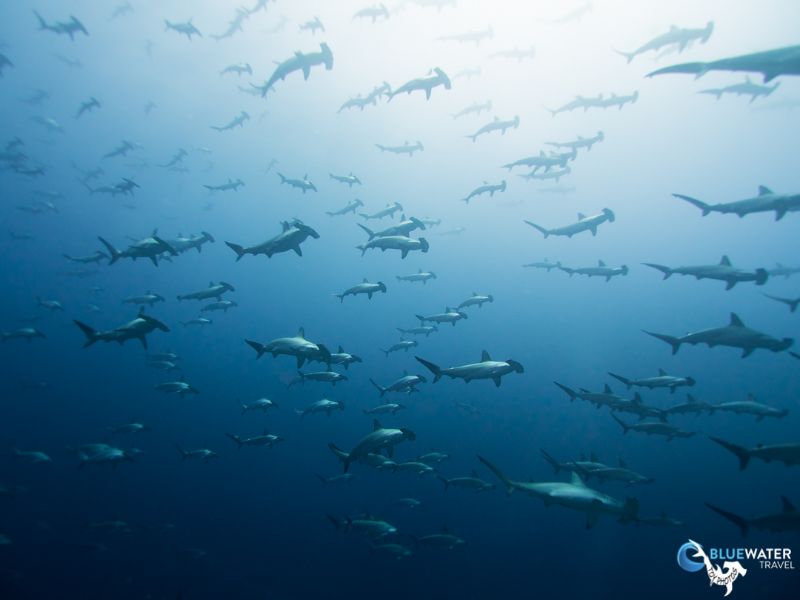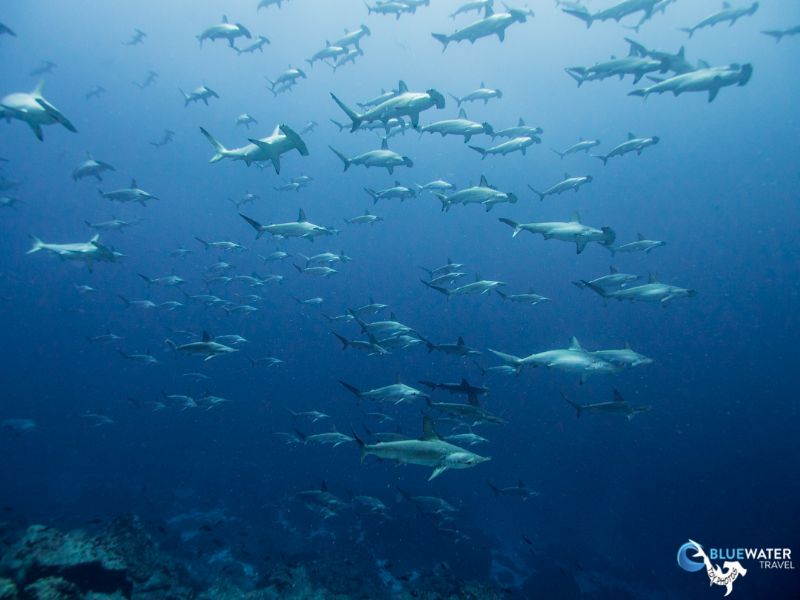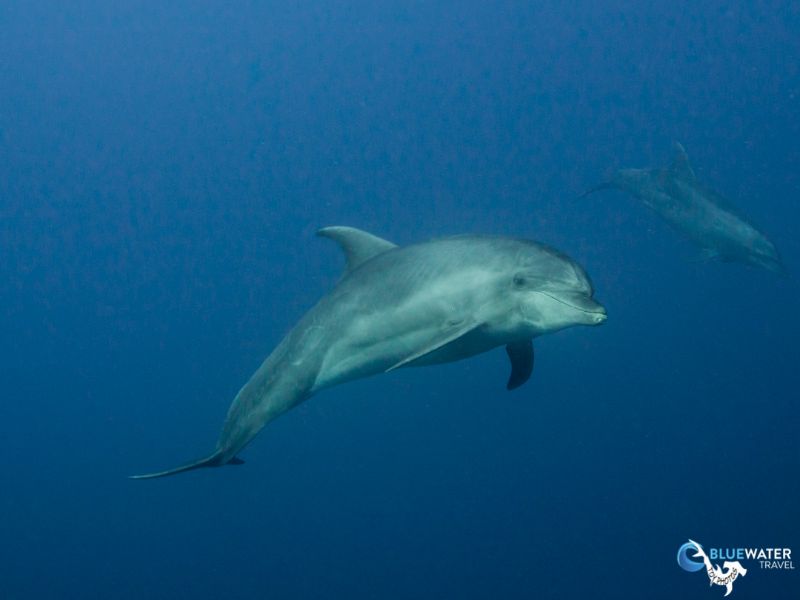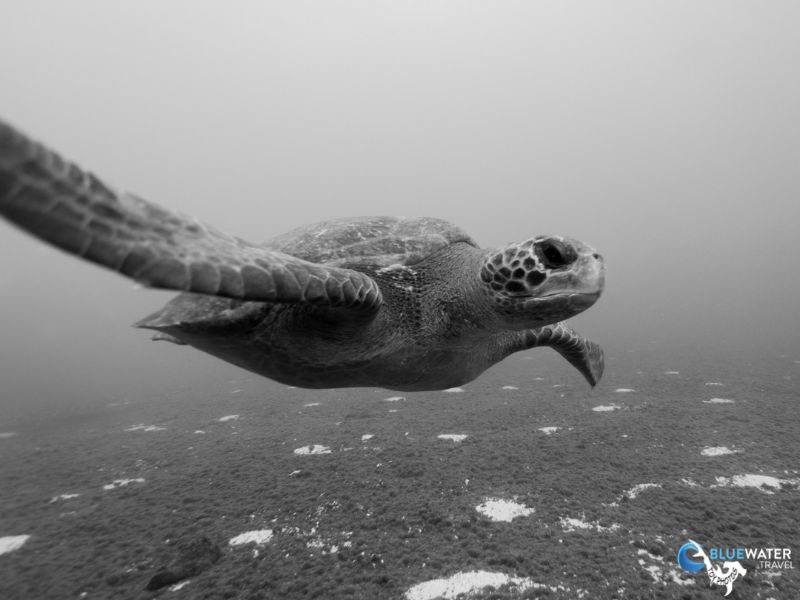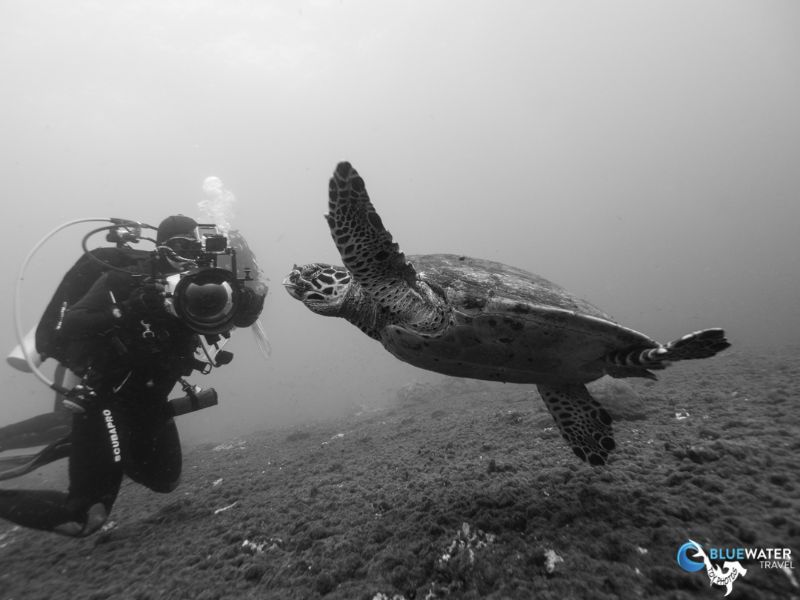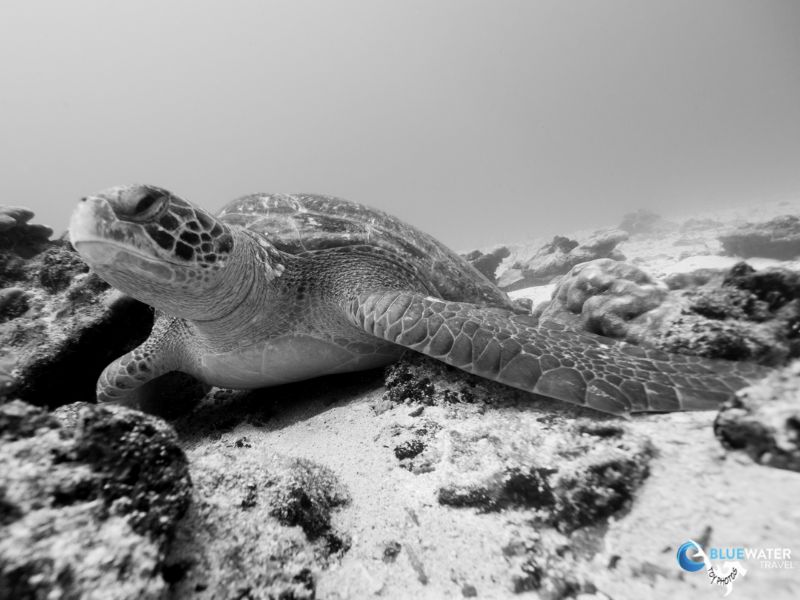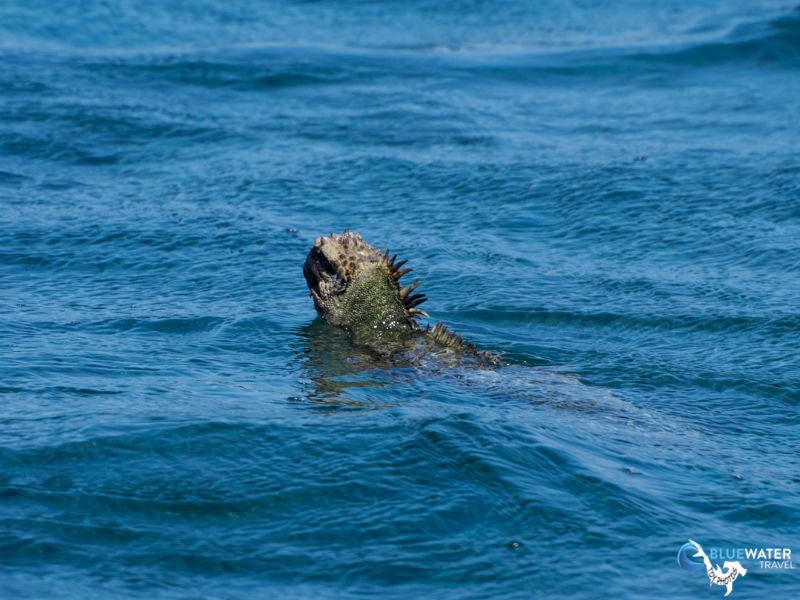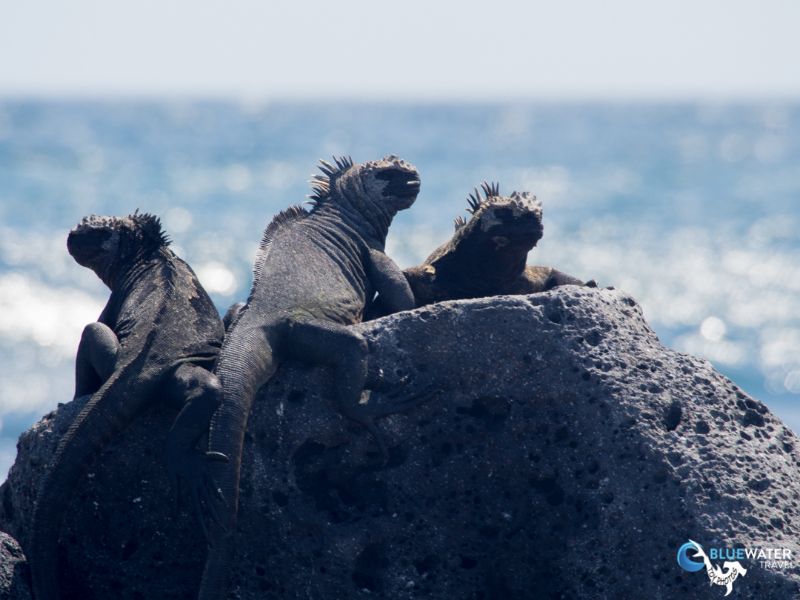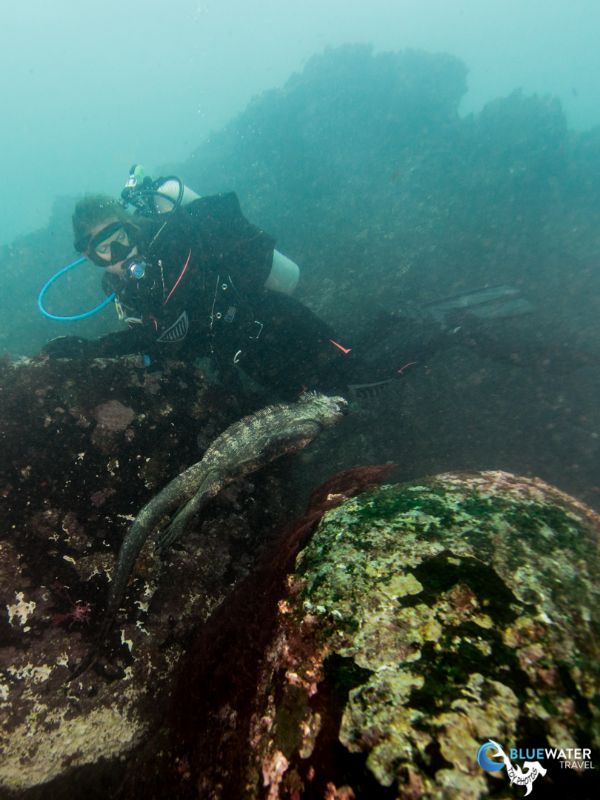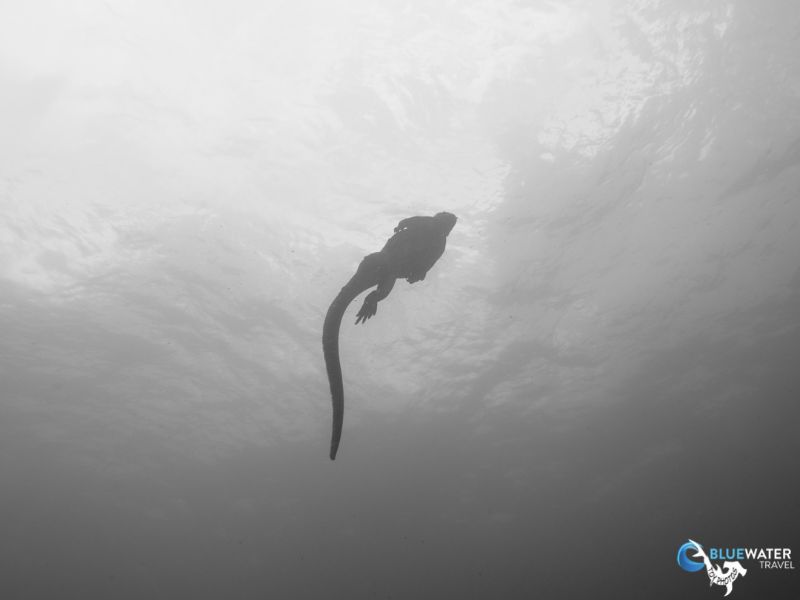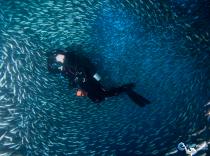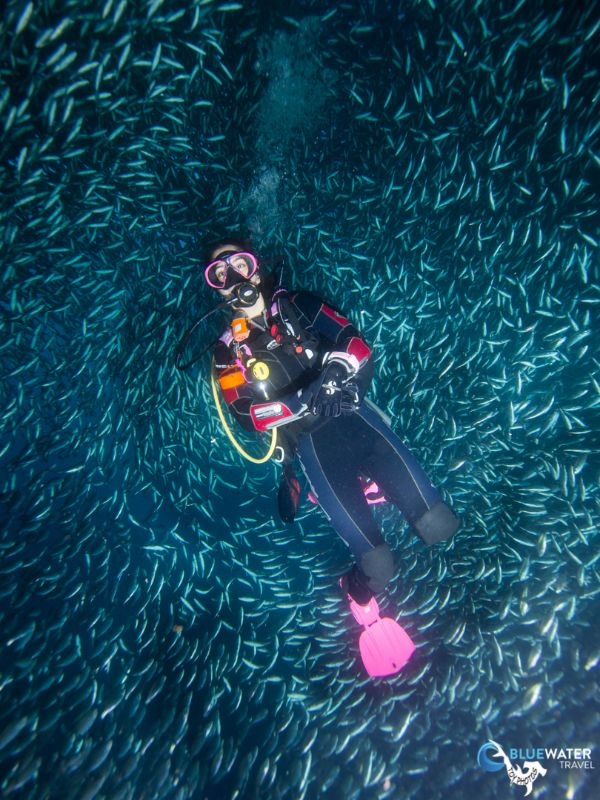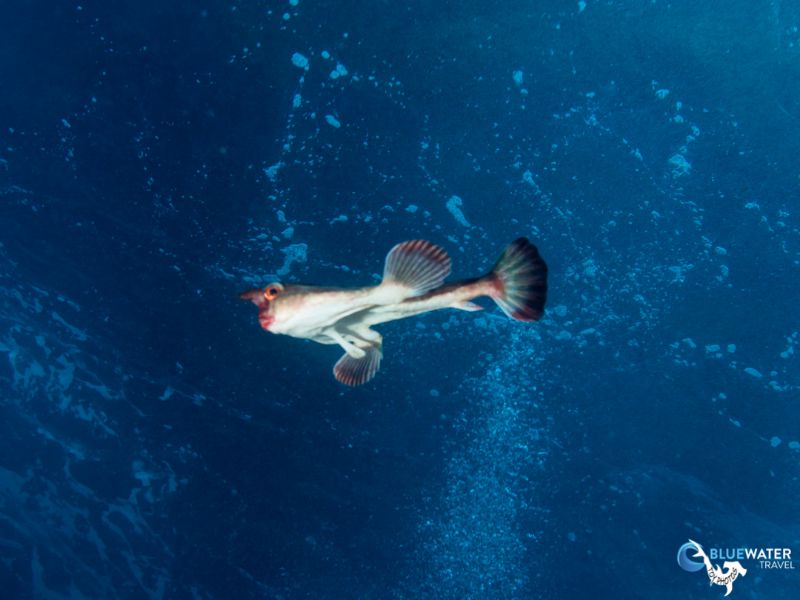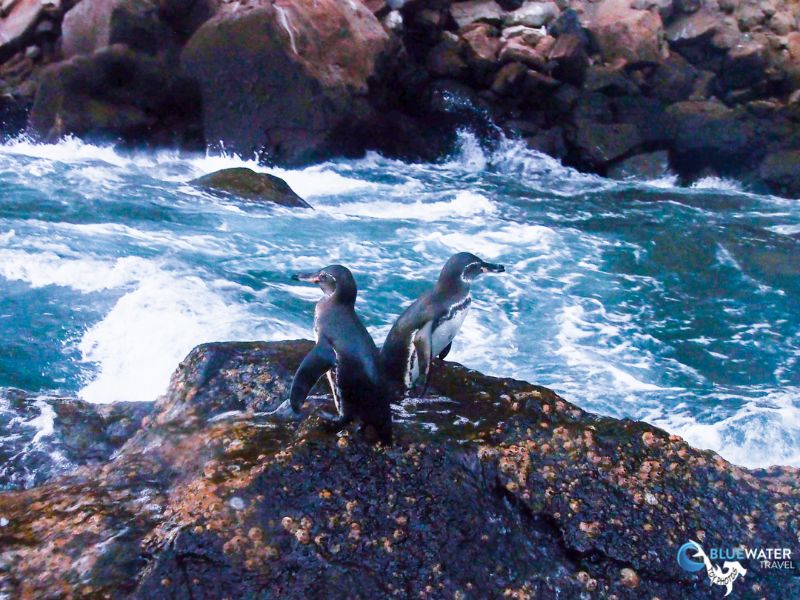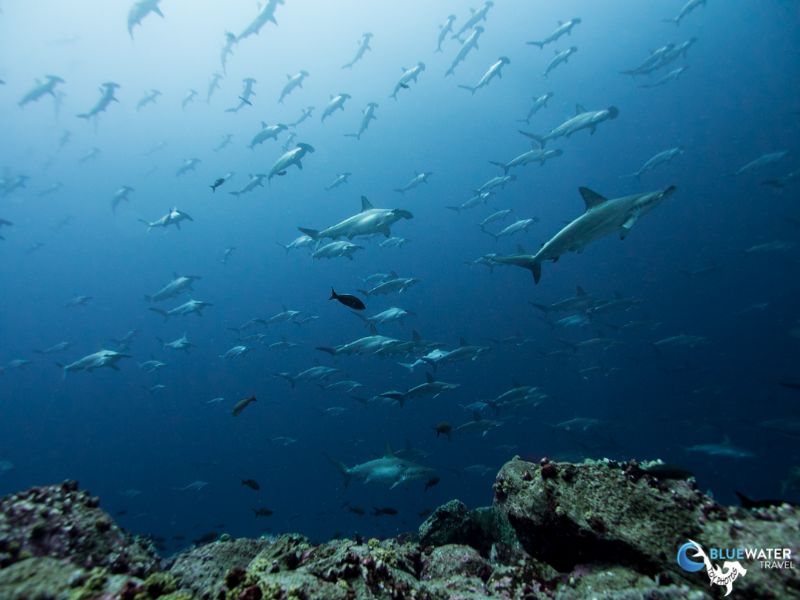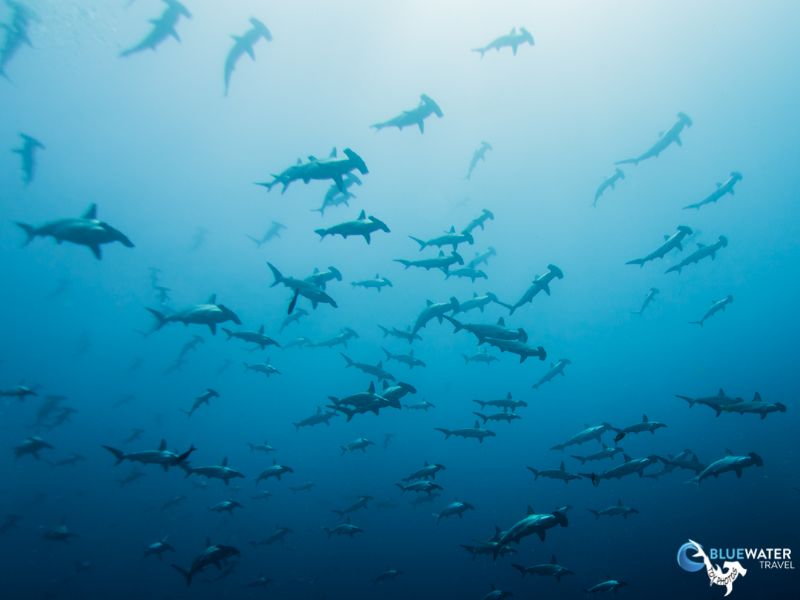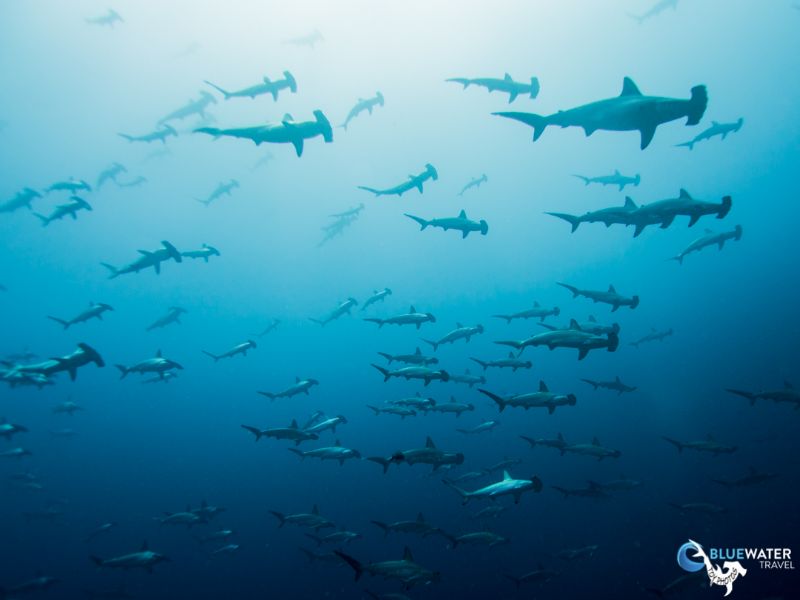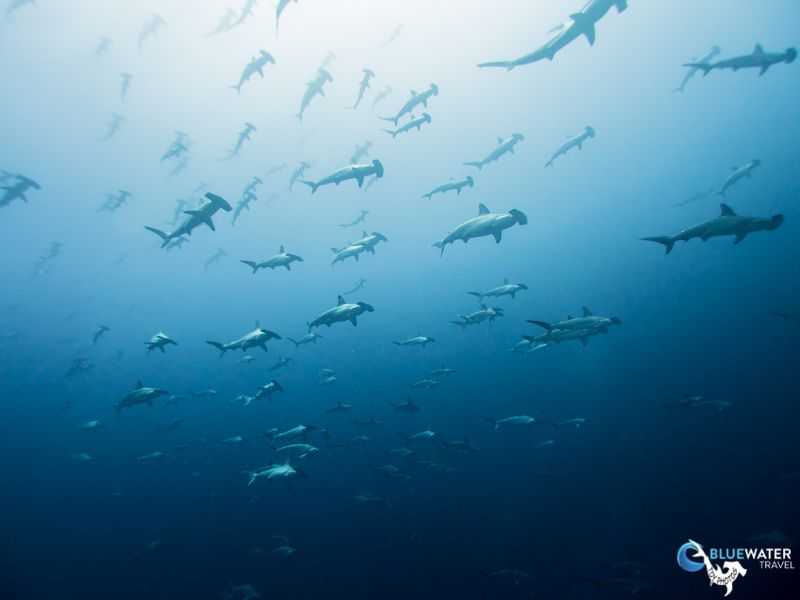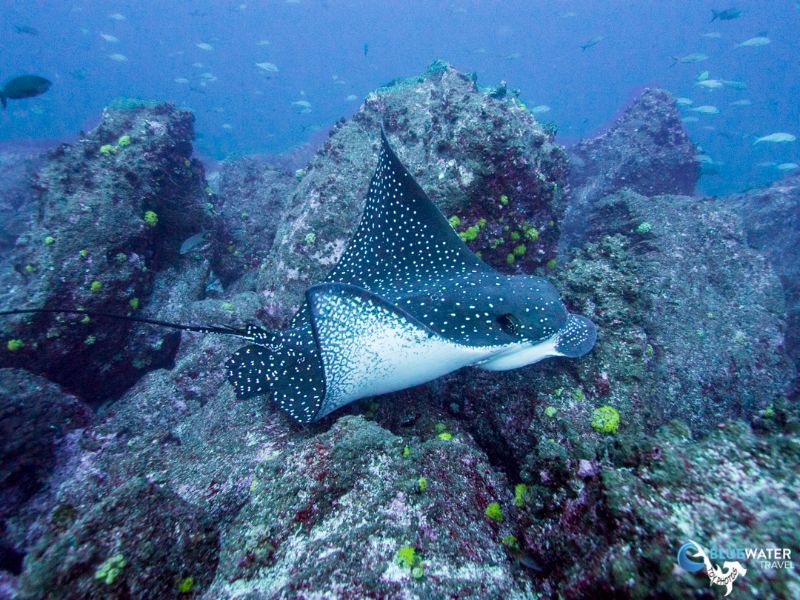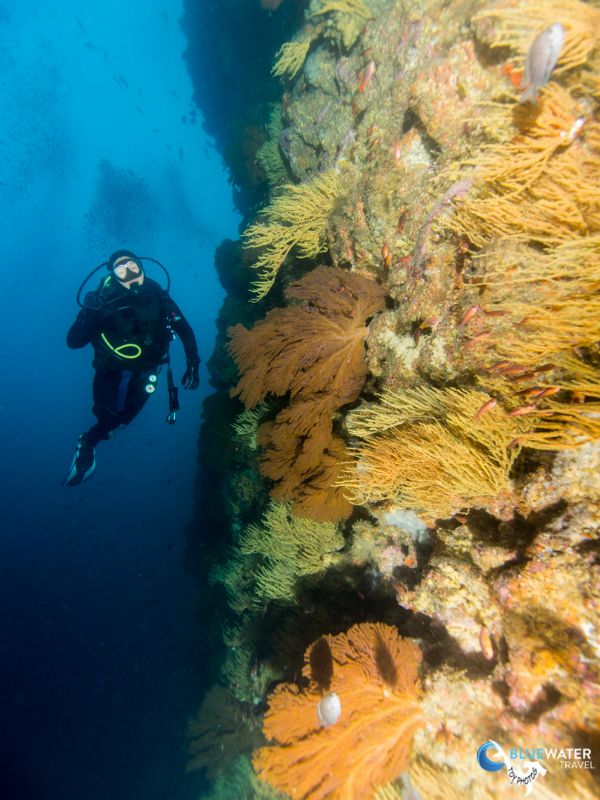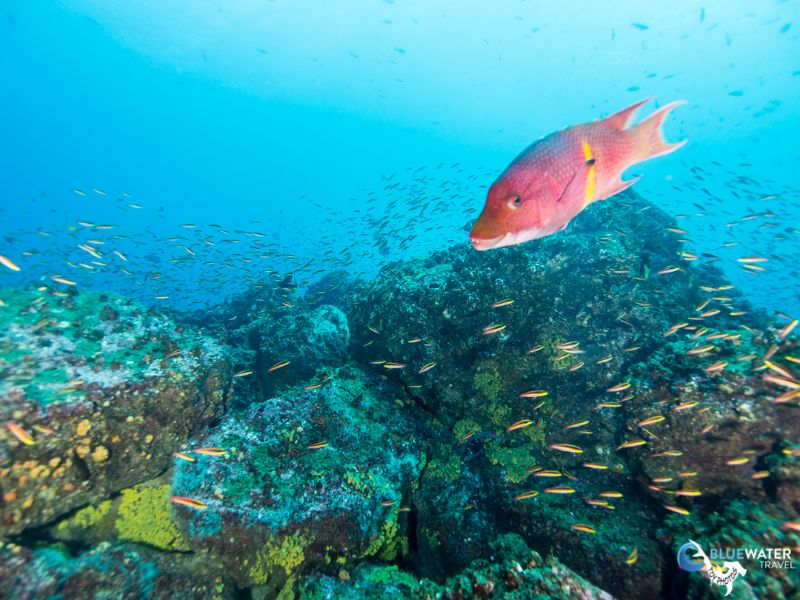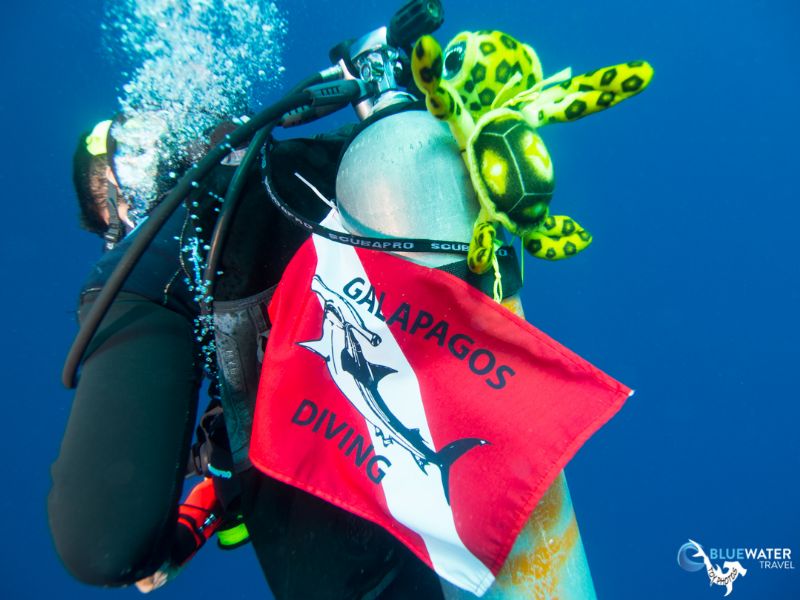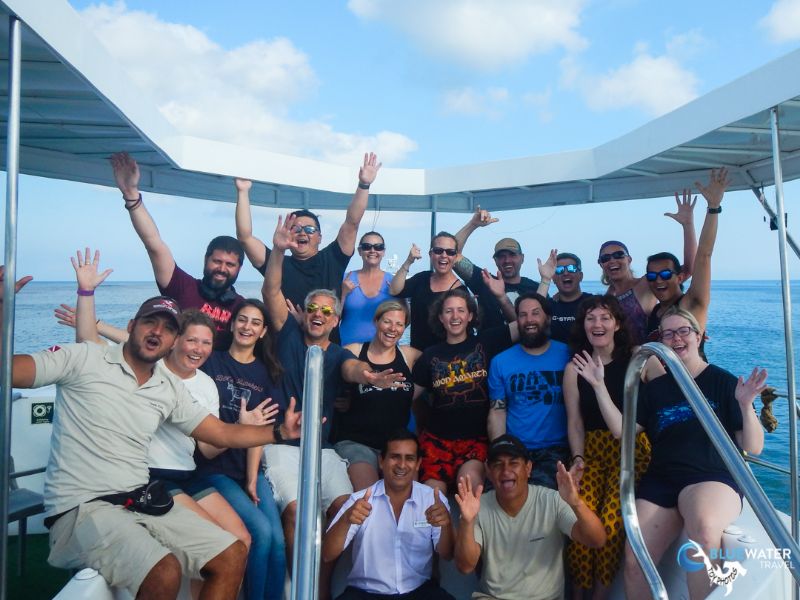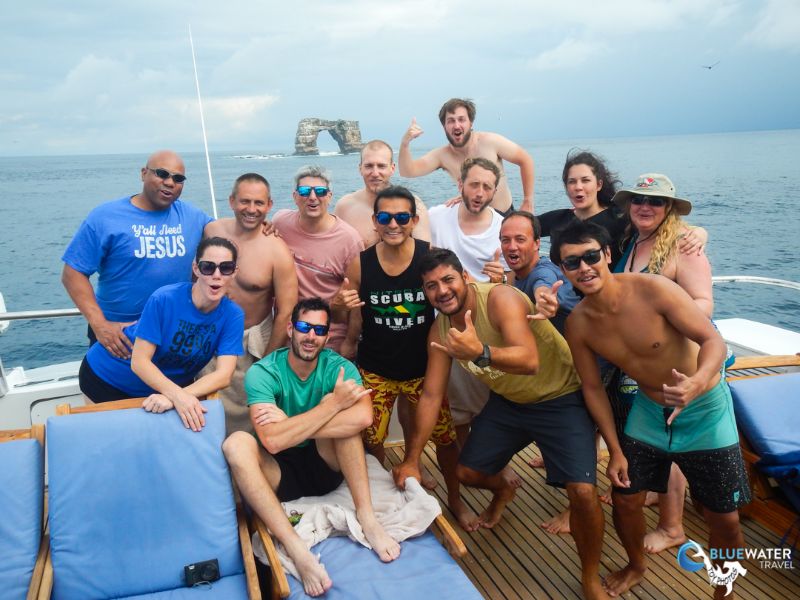GALAPAGOS: WHERE BUBBLES DON’T ALWAYS GO UP
TRIP WITH ECO DIVE CENTER AND BLUEWATER TRAVEL
WORDS AND PICTURES BY TIM YEO
The Galapagos Islands have always been on my bucket list, and I was extremely fortunate to visit and dive the Galapagos Islands for 2 weeks aboard the Humboldt Explorer (HE) in March 2019. I led two 1-week, back-to-back trips with two separate groups of people, each starting and ending on a Monday. The report that follows describes what a week on the HE is like, with notes about how the Week 2 experience differed from Week 1 each day.
Monday
For both weeks, Monday was embarkation day on the HE. To get to Galapagos, some of us flew via Quito, while others flew via Guayaquil—either way, we ultimately had to pay two separate fees. Once at the Ecuadorian mainland, to continue on to Galapagos, everyone had to have their checked bags scanned, and our bags received a special Galapagos tag. We paid $20 for a Tourist Card. Upon arriving at Galapagos, all tourists then had to pay an additional $100 at the airport for the Galapagos National Park Fee. Note that some boats depart from Baltra, so when booking your own trip to Galapagos, make sure that you are flying into the correct island/airport.
After lunch aboard the HE, we motored for 15 minutes to Isla Lobos right outside of the marina at San Cristobal for a checkout dive. Cocktails were waiting for us at post-dive during the welcome party. Dinner and the after-dinner party were the perfect opportunity for guests to start to get to know each other.
Tuesday
The wake-up bell was rung at 5:50 am every morning and our first dive of each day was at 6:30am.
On Tuesday of Week 1, we did 2 dives at Punta Carrion. Highlights included mobula rays, eagle rays, turtles and schools of hammerheads.
After lunch, we motored to Seymour Island for a 90-minute hike. We saw nesting red balloon frigates, mating blue-footed boobies, and land iguanas eating shrubbery. Galapagos sea lions and marine iguanas were sunning themselves on the rocks.
Back aboard the HE, we had a 14-hour motor to Darwin and Wolf Islands for what we hoped would be the highlight of the trip. 5 hours into the journey, we were informed that we were crossing the equator. On the top deck, the sky put on an amazing show with the Milky Way in full view accompanied by millions of stars.
During Week 2, there were no hammerheads at Punta Carrion, but schools of 6-8 mobula rays were out swimming circles around us. During the land excursion, we also saw numerous boobies guarding their eggs. The contrast of the white eggs against their blue feet was impressive.
Wednesday
During Week 1, our first dive at the famed Wolf and Darwin islands did not disappoint. Barely 5 minutes into the dive, we were greeted by hundreds of hammerheads cruising by. We spent a good 30 minutes down on the reef just watching the show go by. The rest of the day was more of the same awesome show of hammerheads. The currents at Shark Bay and Elephant Rock were some of the strongest currents any of us have ever encountered, and we really had to be aware of the nasty down currents out in the blue. Galapagos is a place where bubbles don’t always go up. Bubbles often go downwards or sideways, pulled by strong currents.
Week 2: For the guys that stayed on for a second week, we had no idea how much conditions could vary from week to week within the same month/season. In stark contrast to the previous week, the seas at Wolf were flat and the current was almost non-existent during Week 2. The water temperatures had also warmed up from 65 to 75 degrees Fahrenheit. We had a couple of dives with good hammerhead action, but we had to search for it instead of simply dropping into it. The diving was much more relaxing and enjoyable though and the lack of current allowed us to search the reef for the Galapagos Pacific Seahorse.
Thursday
During Week 1, the plan for Thursday was to complete 2 dives at Wolf Island, then motor over to Darwin for another 2 dives. The Week 1 trend of intense currents continued from the day before and so did the massive school of hammerheads. Some of us saw a huge Galapagos shark on the reef and there was a school of dolphins swimming overhead while the hammerheads were at eye level. For Dive 2, we split the group up and one panga (a small boat that ferried divers to and from dive locations) went for a cave dive. There, a large male sea lion and a couple of pups became obsessed with us, staying with us for most of the dive. After the dive, we spent some time snorkeling with dolphins.
After an easy 2.5-hour motor to Darwin Island during lunch, we anchored off Darwin’s Arch and completed 2 more dives to round out the day. Highlights included massive schools of hammerheads, a number of silky sharks, wahoo, rainbow runners, and a dozen yellowfin tuna. One of the schools of hammerheads had a number of baby hammerhead sharks that were barely a couple of feet long. Everyone agreed that the baby hammerhead sharks were the cutest things we had ever seen.
Week 2: After 2 very relaxing dives at Wolf Island, we motored to Darwin Island and we had a taste of the currents at Darwin. We spent the 2 dives drifting in the currents and saw some smaller schools of hammerheads.
Friday
Week 1: We jumped into the water Friday morning dreading the cold. Water temperatures had dropped to the low 60’s. The first dive offered decent hammerhead action and strong currents. We decided to deviate from our original itinerary and complete 2 dives at Darwin, then head back to Wolf Island for our 3rd and 4th dives. Our last dive at Darwin did not disappoint. Just barely 2 hours after our first dive, we jumped in to find minimal currents, and amazing 100-foot visibility. The school of hammerheads we encountered numbered in the hundreds and possibly thousands. There were hammerheads as far as the eye could see, and they simply kept swimming by us until we had to leave them for our safety stop.
On the way back to the HE, we took a panga ride to grab some photos of Darwin’s Arch. After a 2-hour navigation back to Wolf Island while the divers caught some shut eye, we completed 2 more dives at Shark Bay with many schools of hammerheads. We also had a large school of bottlenose dolphins stay with us for the entire dive—their delighted squeals accompanied our bubble noises.
Week 2: The plan was for 4 dives at Darwin’s Arch. After 3 dives we were graced by solitary hammerheads and many turtles. We decided to change it up a little and head back to Wolf Island to do a night dive. During the night dive, we saw a baby Galapagos shark. Some sea lions danced around our dive lights.
Saturday
Week 1: We slept in until 7:30 am and had a lazy morning until our first dive at Fernandina Island at 9 am. The marine iguanas were still sunning themselves on the rocks, so we boarded the panga and went close to see them alongside flightless cormorants and Galapagos sea lions. By 10 am, the sun was up and the marine iguanas were starting to make their way into the water. Waves were building, but the guides allowed us into the water to dive. Even though conditions were rough, we all saw marine iguanas swimming on the surface and chewing on algae underwater.
After lunch, we arrived at Isabela Island and geared up to go look for mola molas. Unfortunately, the water was warm and the molas were nowhere to be found. But we had an amazing dive with a massive school of Salemas, which provided great photo opportunities for the photographers on the trip. Playful sea lions followed us the entire dive and some divers saw a sea lion play with a red-lipped batfish near the surface. On the panga ride back to the HE, we were lucky to see some Galapagos penguins swim to a rock and jump onto it which gave us an opportunity to snap some topside shots of them.
Week 2: Finally, the schools of hammerheads arrived. We had the HE’s regular itinerary this week, which included an extra day at Wolf and Darwin but not the westernmost islands of Fernandina and Isabela. This proved to be a wise choice as the schools of hammerheads materialized and we had amazing dives with hundreds of hammerheads, schools of dolphins, fat Galapagos sharks, and massive eagle rays feeding on the reef. Because the diving was so good, we stayed to do 4 dives at Wolf Island and 1 dive on the last diving day at Santiago Island instead of 3 dives at Wolf and 2 dives the next day.
Sunday
Week 1: We woke up in Santiago Island and did a couple of dives at Cousin’s Rock. We saw a mobula ray, a school of eagle rays, and a number of whitetip reef sharks hiding under rock ledges. On the penultimate dive of the trip, we had a school of mobula and eagle rays put on a show for us. A couple of divers in the group also had a 10-foot tiger shark creep up on them. After lunch, we motored to Santa Cruz Island and embarked on a land excursion to see the Galapagos giant tortoises and some lava caves. We then had a few hours in Puerto Ayora to explore the Charles Darwin Research Station, purchase souvenirs, and have dinner at one of the many restaurants on the boardwalk. Week 2: Our last dive of the trip yielded eagle rays, whitetip reef sharks, some hammerheads, and playful sea lions.
Monday
On the last day of both trips, we said our goodbyes to the amazing crew of the HE and headed back to the airport on San Cristobal.
The diving I experienced during both weeks was incredibly different, but each week was amazing and enjoyable in its own right. Because of the many strong currents that grace the islands, especially the northernmost islands of Wolf and Darwin, it is impossible to predict conditions on any given day. Water temperature, the strength of the current, visibility, and marine life are all dependent on which current is the dominant current at the time of the dive.
My lifelong dream of diving the Galapagos Islands exceeded all my expectations during these 2 amazing weeks. The divers that I had the pleasure to blow downwards and sideways bubbles with and the crew of the Humboldt Explorer ensured that these memories will stay with me for a lifetime.
JOIN US ON OUR NEXT Galapagos TRIPS!
Bluewater Travel conducts multiple big animal wide angle photography workshops and group trips in Galapagos every year. Join us on one of the following trips!
Galapagos Photo Workshop: August 2-9, 2021
Galapagos Photo Workshop: April 25 - May 5, 2022
Email us at info@bluewaterdivetravel.com or leave us a message in the live chat box for the latest availability and pricing!
HOW TO BOOK A TRIP TO GALAPAGOS
Bluewater Travel has many years of experience booking and leading group and individual trips to Galapagos. We can book you on any liveaboard or resort for the same cost or less than booking any other way.
We know the diving, accommodation, rooms, cabins and when to go better than anyone else!
Email us at info@bluewaterdivetravel.com

